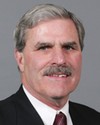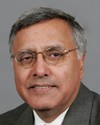Thank you, sir.
My name is Sergeant Richard Groulx, and I have been with the RCMP for just over 20 years now.
We do have handouts in French as well, and if you have any questions later on, feel free to ask in French; I'm fully bilingual.
My only relationship with Taser International is that I am a master trainer/instructor. I have never owned or purchased any of the shares, just for the record. I am in no way related to the company.
Today we're going to talk about how the weapon system works, under which guidelines RCMP members are to use the weapon system, and how it relates to the incident management intervention model, the use-of-force model.
We'll talk a little bit about technology. I will introduce the two models that the RCMP approved and that we currently use in the field--the M26 and the X26. We'll talk a little bit about nomenclature, how it works, and how it relates to the IMIM.
How does the weapon system work? Basically, when it's deployed it propels wire, and attached to the wire there is a probe that makes contact with the client on the clothing or on the skin. From there, it directs energy to the client, and it affects the sensory and motor functions and the nervous system.
Before I go on, I do have some spent cartridges here. They're not live. Feel free to have a look at them because that will help you during the presentation to visualize what goes on.
How does it work? When the probe makes contact with the individual, or the electrode on a conducted energy weapon, it just transfers electrical energy. The human nervous system communicates with simple electrical pulses. With the technology that Taser International uses, those electrical pulses are very similar to the ones the human body uses to communicate messages through the nervous system in order to function. What happens is those electrical pulses override the human nervous system.
How can we better explain this to make it easier to understand? Pretend you are on the phone with someone; you are communicating, so you are talking. If there is static on the phone, communication will be affected. If a third party jumps onto the line and starts talking louder than you are, you will lose communication with your partner, or whoever you are on the phone with. It's the same principle; electrical impulses are overriding the human nervous system.
The M26 and the X26 are the two models the RCMP has approved for use, and we do have both in the field. The M26 was released by Taser International in 1999. We did some studies, some evaluation, in 2001 and approved it for use in the field in 2002.
The X26 came in 2003; however, we waited a couple of years. We went through two evaluation phases and we released it in 2005. It is a much better technology than the M26. It is 5% more effective, and I will explain very shortly how it's measured. It's 60% smaller and lighter than the M26.
I have with me an M26 and the smaller version, the X26. They don't have batteries in them, so there is no power.
I think all of us have been exposed to the publicity in the media, in the papers or television. Even the vendor is promoting the conducted energy weapon or taser as generating 50,000 volts. It's their scary statement, and that's what we feel is really scaring the public.
What is important to understand here is that the voltage is not what is dangerous for human beings; it's the amperage, the amperes. I know that, like me, all of my colleagues experienced a Van De Graaff generator in high school. It generates over one million volts, but the amperage is so low it's safe.
Open circuit, the M26 and the X26 contain the pressure of 50,000 volts. Let's go back to your backyard where there's a water tap. When the water tap is closed, there is some water pressure behind it. That's the 50,000 volts. Once the water tap is released, you're losing pressure; you have a circuit of water going through the garden hose, but the pressure is less than when the tap was closed. That's probably how I can best explain this.
When we talk about amperage, what does it mean? Yes, 50,000 volts could be the amount of water. Let's pretend that over this ceiling here there's another floor, a 14-foot floor full of water. If the floor opened or collapsed, some of us might die because of the tremendous force of the water coming down on us. If I opened a water tap of about one inch in diameter, the floor and I may get wet, but I'm not going to get injured. So the size of the garden hose, the conduit, is the amperage with regard to a conducted energy weapon. So there are 50,000 volts. However, when these are released, the voltage or pressure, the amperage, is minimal. That is why we strongly believe that the conducted energy weapon is safe to use.
When I talk about amperage, both units offer less than 4 milliamps. The X26 offers 2.1 milliamps and the M26 offers 3.6 milliamps.
As for the joules, the M26 has 1.76 joules. And each pulse represents 0.5 joules, as the current is not continuous but is sent as electrical pulses from the weapon system. So it's on and off. For the X26, it's 0.07 joules. External cardiac defibrillators typically deliver 150 joules to 400 joules per pulse to cause the heart to defibrillate. So you can see how low the voltage is, not only the voltage but also the current and joules, of the M26 and X26 are in comparison to the defibrillator.
How does it work? We need a circuit; electricity must be able to flow between two probes or electrodes. On the floor right now we have two probes attached to the wires. The wires are embedded inside the cartridge up to 21 feet, and the probes are attached to the end of it. At the end of the probes, there is a small harpoon. That's what hooks on the clothing or penetrates the skin.
The weapon system, when we take it out of the safety box, comes like this. At the front there are two electrodes. Of course, this one is live. I will activate it. There is a safety lever, and all the M26 and X26 models do have safety levers for activation. It comes also with a flashlight and a laser. You can see the electricity arcing in between the two electrodes, but I need a circuit for it to work.
When the probes are deployed on a client, the two probes must be attached to the client in order to work. If one probe breaks the skin and the other one only attaches to a loose jacket, a loose piece of clothing--it could be baggy pants, a big shirt--what happens here is the current is trying to arc into the body, to jump into it.
How far can the current jump? The vendor is suggesting up to two inches cumulative for the two probes, so not two inches per probe but a total of two inches.
If you've ever seen a video where the client basically seems to have the effect and does not fall down but is jerking, it's most probably because one of the probes is attached to the clothing and the current is trying to arc into the body, so it's on and off. The reaction we get from the client, in trying to control a client, is they have that jerking motion; they're moving. If they move and they fall and that probe gets closer to the body, then the circuit is on at that point. Without a circuit we have no effect.
The electricity follows the path of least resistance between the probes, with some dissipation. As I just explained, if one probe breaks the skin and the second probe is just attached to the clothing, there will never be 50,000 volts going through the client to start with. A lot of electricity will be dissipated. At the maximum, with an M26 we can anticipate about 5,000 volts, and with an X26, maybe 1,200 volts. Again, it's not the voltage that stops the client, that controls the client, it's the amperage.
The path of least resistance...electricity is very, very lazy. When it penetrates the human body, it just travels through the nervous tissue and muscle tissue at the surface of the body. It goes as quickly as possible by the easiest route to go to the next probe. Basically that is why you have strong, uncontrolled contractions.
I have been through this several times. I took some exposure for five seconds on a few occasions. In 2005 I took a 15-second hit, non-stop, for credibility, for court purposes as well. It just causes your nerves and your muscles to contract to the point where you don't have the ability to formulate a plan to lift one hand or to carry on with your goal. The muscles are contracting really hard, to the point where most likely you will fall to the ground. The risk of injury is in falling to the ground, or, again, if the situation is dynamic. Sometimes a probe can hit a sensitive area on the client, like an eye. That is a possibility in a dynamic situation.
The greater the spread between the probes, the greater the effectiveness, because we have more muscle mass contracting. Why do we use it? Why do we approve it? It reduces officers' and clients' or suspects' injuries by stopping the threat from a safe distance. The safe distance, the optimum range, would be anywhere from 7 to 21 feet.
It's extremely effective when it works, when you have two-point contact, even compared to lethal weapons, because it immediately causes incapacitation when successfully deployed. It does not replace a firearm. It's better than a firearm. It does control the threat immediately, which firearms most likely do not do. We talked about handgun calibre.
It's safe in numerous situations. It's safer for suspects and officers, and it's easy to use and maintain.
Before 2002, the RCMP did not possess any less lethal weapon that would effectively control individuals who were focused, aggressive attackers. For example, there is the baton. We have dealt with suspect clients who, when the officer has tried to control them with a baton, cannot feel the pain. The situation keeps escalating and we can't get immediate control of the client.
It's the same with OC spray. OC spray doesn't work. OC spray is no kung fu in a can. It doesn't work that way. Our officers now are trained, when they are OC sprayed, to fight for a minute or more, and they can do it. So OC spray is not stopping anyone. The conducted energy weapon does stop the individual immediately.
An emotionally disturbed person and the ones who are under the effect of certain substances, drugs....
What's the target zone? When we compare the conducted energy weapon with other weapon systems, such as firearms and OC spray.... With OC spray, we must make contact with the face area to affect the client. Firearms have basically a lethal zone from the head down to the groin area. We can basically target the conducted energy weapon to any location on the human body and it will work. However, we do not train our members to deploy at the head area unless the situation dictates death or grievous bodily harm, such as if it's a situation in which a firearm is required but the member does not have access to it. We train our members to aim at the centre of the back.
There are two modes of deployment. One is push stun mode, which means pressing the conducted energy weapon into a preferred push stun location. That is done without a cartridge. If the member decides to use push stun mode, he simply removes the cartridge, activates the weapon system, applies pressure to the preferred location where there are some nerves--sensitive nerves, like the common peroneal radial nerves--and provides one application for five seconds using an overhand grip.
The X26, every time we pull the trigger, will deploy for five seconds. However, the member has the ability to stop that deployment at any time.
So what does it do? It seems to be the softest approach. You talk about probes and projectiles going, but what does it do? Personally, I don't like it, because nobody can stay still under an electrical discharge like this. The normal reaction is that we move.
Who fishes here? Who has fished before? What's your biggest fish?








